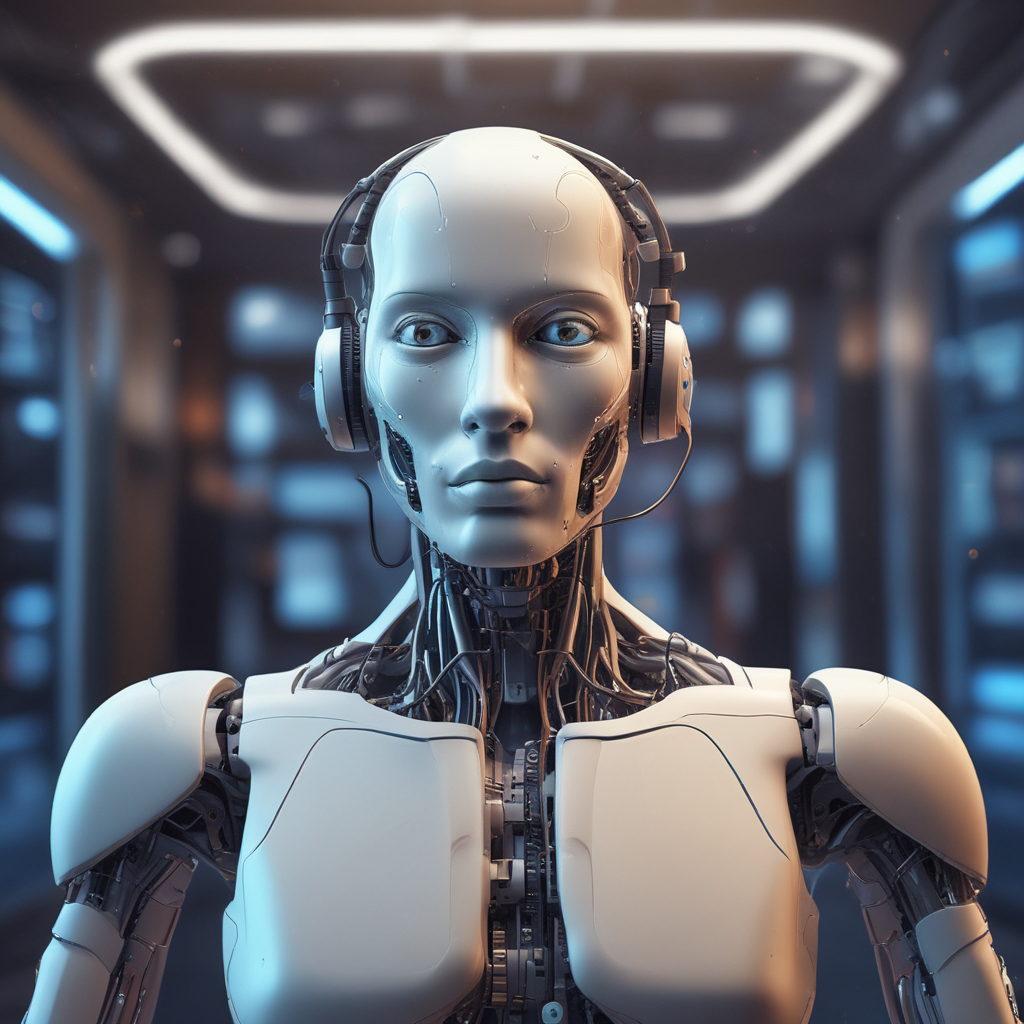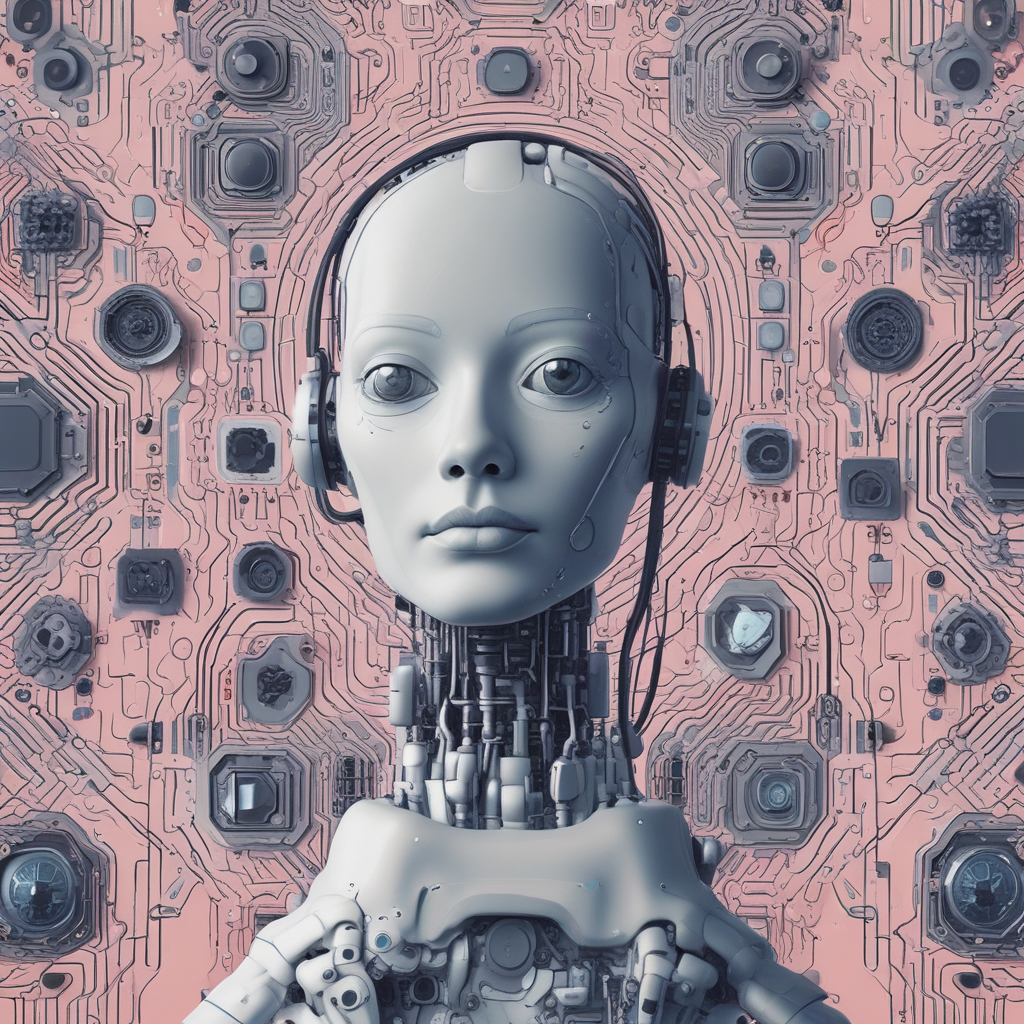AI is everywhere – keep control of your life

AI is everywhere - keep control of your life
Understanding the Impact of AI on Your Daily Life: In this blog post, explore the ways in which AI is already affecting your daily routine, from virtual assistants like Alexa and Siri to smart home devices and personalized recommendations on social media. Discuss the benefits and drawbacks of these technologies and offer tips for staying in control of your data and privacy
In today’s world, artificial intelligence (AI) is no longer a futuristic concept but a reality that is rapidly transforming our daily lives. From virtual assistants like Alexa and Siri to smart home devices and personalized recommendations on social media, AI is everywhere. While these technologies offer numerous benefits, they also raise concerns about privacy and data control. In this article, we will explore the ways in which AI is affecting our daily routines, discuss its benefits and drawbacks, and offer tips for staying in control of our data and privacy.
Virtual Assistants:
Virtual assistants like Alexa, Siri, and Google Assistant have become a part of our daily routine. They can help us with tasks like setting reminders, playing music, and answering questions. However, these devices also collect vast amounts of data about our preferences, habits, and routines. While this data can be used to provide personalized recommendations and services, it also raises concerns about privacy. To stay in control of your data, it’s essential to read the privacy policies of these devices and understand what data is being collected and how it’s being used. You can also disable certain features or opt-out of data collection altogether.
Smart Home Devices:
Smart home devices like smart thermostats, lights, and locks offer convenience and energy savings. However, they also collect data about our habits and routines, which can be used to provide personalized recommendations and services. While this data can be helpful, it also raises concerns about privacy. To stay in control of your data, it’s essential to read the privacy policies of these devices and understand what data is being collected and how it’s being used. You can also disable certain features or opt-out of data collection altogether.
Personalized Recommendations:
Personalized recommendations on social media, streaming services, and e-commerce websites offer a more tailored experience. However, these recommendations are based on our browsing and purchase history, which can be used to target us with ads and promotions. While this can be helpful, it also raises concerns about privacy. To stay in control of your data, it’s essential to read the privacy policies of these services and understand what data is being collected and how it’s being used. You can also disable certain features or opt-out of data collection altogether.
Benefits and Drawbacks:
The benefits of AI are numerous, from increased efficiency and productivity to improved healthcare and education. However, these technologies also raise concerns about privacy and data control. While it’s essential to embrace the benefits of AI, it’s also crucial to ensure that our data is being used responsibly and with our consent. To achieve this, it’s essential to read the privacy policies of these technologies, understand what data is being collected, and have the ability to opt-out of data collection or delete our data altogether.
Tips for Staying in Control:
To stay in control of your data and privacy, it’s essential to:
1. Read the privacy policies of these technologies and understand what data is being collected and how it’s being used.
2. Disable certain features or opt-out of data collection altogether if you’re uncomfortable with the amount of data being collected.
3. Use strong passwords and two-factor authentication to protect your accounts and data.
4. Regularly review and delete any unnecessary data.
5. Be cautious of phishing scams and other forms of online fraud.
6. Stay informed about the latest privacy and data control issues and advocate for responsible data use.
In conclusion, AI is everywhere, and it’s essential to embrace its benefits while ensuring that our data is being used responsibly and with our consent. By following the tips outlined above, we can stay in control of our data and privacy and enjoy the benefits of AI while minimizing its drawbacks. As AI continues to transform our daily lives, it’s crucial to remain vigilant and advocate for responsible data use.
The Future of AI and Your Job: As AI continues to advance, many jobs are at risk of being automated. In this blog post, examine the potential impact of AI on the job market and offer strategies for staying ahead of the curve. Discuss the skills that will be in demand in a world with more AI and how to develop them

As artificial intelligence (AI) continues to make significant strides in various industries, it’s becoming increasingly clear that its impact on the job market will be significant. While some jobs will undoubtedly be automated, others will require new skills and expertise that are complementary to AI. In this article, we’ll explore the potential impact of AI on the job market and offer strategies for staying ahead of the curve.
Firstly, it’s essential to understand that AI is not a replacement for human workers but rather a tool that can augment and enhance their capabilities. According to a report by McKinsey, while AI will displace some jobs, it will also create new ones. The report estimates that by 2030, AI could lead to the creation of 133 million new jobs, offsetting the 75 million jobs that will be displaced.
So, what skills will be in demand in a world with more AI? Here are a few:
1. Data literacy: As AI becomes more sophisticated, it will require vast amounts of data to learn and improve. This means that workers with strong data literacy skills will be in high demand. These skills include the ability to collect, clean, and analyze data, as well as the ability to interpret and communicate insights to stakeholders.
2. Critical thinking: While AI can perform many tasks, it still lacks the ability to think critically and make complex decisions. Workers with strong critical thinking skills will be able to work alongside AI to make informed decisions and solve complex problems.
3. Creativity: AI is excellent at performing repetitive tasks, but it lacks the ability to be creative. Workers with strong creative skills will be able to work alongside AI to generate new ideas and solutions.
4. Collaboration: As AI becomes more integrated into the workplace, it will require workers to collaborate with machines. Workers with strong collaboration skills will be able to work effectively with AI and other human colleagues.
5. Emotional intelligence: While AI can perform many tasks, it still lacks the ability to understand and respond to human emotions. Workers with strong emotional intelligence skills will be able to work effectively with AI and other human colleagues, as well as manage the emotional impact of AI on the workforce.
To develop these skills, workers can take several steps:
1. Learn data literacy: Workers can take courses in data analysis and visualization to develop their data literacy skills. They can also learn how to collect and clean data using tools like Python and R.
2. Develop critical thinking skills: Workers can practice critical thinking by analyzing complex problems and developing creative solutions. They can also learn how to evaluate the accuracy and reliability of AI outputs.
3. Cultivate creativity: Workers can develop their creativity by engaging in activities like brainstorming, ideation, and design thinking. They can also learn how to use AI to generate new ideas and solutions.
4. Collaborate with AI: Workers can learn how to work effectively with AI by understanding its capabilities and limitations. They can also learn how to communicate effectively with AI and other human colleagues.
5. Develop emotional intelligence: Workers can develop their emotional intelligence skills by practicing active listening, empathy, and emotional regulation. They can also learn how to manage the emotional impact of AI on the workforce.
In conclusion, AI is not a replacement for human workers but rather a tool that can augment and enhance their capabilities. While AI will displace some jobs, it will also create new ones. Workers can stay ahead of the curve by developing skills like data literacy, critical thinking, creativity, collaboration, and emotional intelligence. By doing so, they can work effectively with AI and other human colleagues and thrive in a world with more AI.
How to Use AI to Improve Your Health and Wellness: From wearable devices that track your fitness to AI-powered medical diagnoses, AI is transforming the way we think about health and wellness. In this blog post, explore the ways in which AI can help you live a healthier life, from personalized nutrition plans to virtual therapy sessions. Discuss the benefits and drawbacks of these technologies and offer tips for staying in control of your health data
As technology continues to advance at an unprecedented pace, artificial intelligence (AI) has become an integral part of our daily lives. From smartphones to smart homes, AI is transforming the way we interact with technology and the world around us. In the realm of health and wellness, AI is revolutionizing the way we approach our physical and mental well-being.
One of the most significant ways AI is improving our health is through wearable devices that track our fitness and activity levels. These devices, such as smartwatches and fitness bands, use AI algorithms to analyze our movements and provide personalized insights into our health. They can monitor our heart rate, sleep patterns, and even our stress levels, allowing us to make informed decisions about our lifestyle choices.
Another area where AI is making a significant impact is in medical diagnosis and treatment. AI-powered systems can analyze vast amounts of medical data, including X-rays, MRI scans, and genetic information, to provide more accurate and timely diagnoses. This technology can also help doctors develop personalized treatment plans based on a patient’s unique genetic makeup, improving the effectiveness of treatments and reducing the risk of side effects.
However, as with any technology, there are both benefits and drawbacks to using AI in health and wellness. One of the main concerns is the potential for data privacy and security breaches. With the increasing amount of personal health data being collected and analyzed, there is a growing risk of this information falling into the wrong hands. It’s essential to ensure that our health data is protected and that we have control over who has access to it.
Another concern is the potential for AI to replace human healthcare professionals. While AI can provide valuable insights and support, it’s essential to remember that healthcare is a complex and multifaceted field that requires human expertise and empathy. It’s crucial to strike a balance between using AI to enhance healthcare delivery and ensuring that human healthcare professionals remain at the forefront of patient care.
So, how can we ensure that we’re using AI to improve our health and wellness while maintaining control over our data? Here are a few tips:
1. Understand your data: Take the time to understand what data is being collected and how it’s being used. This will help you make informed decisions about which technologies to use and how to share your data.
2. Choose trusted providers: When selecting wearable devices or AI-powered health services, choose providers that have a proven track record of data privacy and security. Look for providers that are transparent about their data practices and offer clear opt-out options.
3. Stay informed: Keep up-to-date with the latest developments in AI and healthcare technology. This will help you make informed decisions about which technologies to use and how to use them effectively.
4. Collaborate with healthcare professionals: While AI can provide valuable insights and support, it’s essential to remember that healthcare is a complex and multifaceted field that requires human expertise and empathy. Collaborate with healthcare professionals to ensure that you’re getting the best possible care.
In conclusion, AI is transforming the way we approach our health and wellness, from wearable devices that track our fitness to AI-powered medical diagnoses. While there are both benefits and drawbacks to using AI in health and wellness, it’s essential to ensure that we’re using this technology to improve our health while maintaining control over our data. By following the tips outlined above, we can ensure that we’re using AI to enhance our health and wellness while staying in control of our data.


